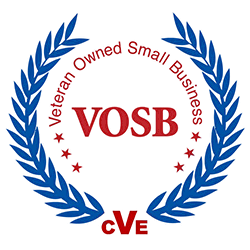In underinsured motorists (“UIM”) cases in which more than one UIM insurer provides coverage, the insurers may dispute how the liability insurance credit should be apportioned among them. This situation comes up with some regularity when a UIM beneficiary is an insured under their own policy and is also an insured under a second policy as either (1) a resident relative, or (2) an occupant of a vehicle insured under the second policy.
In a multi-policy situations, a policy can be either primary, excess, or co-primary. The primary insurer will be the first one to get credit for the liability insurance proceeds. However, if there are two policies that are co-primary, they will share the credit for the liability insurance proceeds on a pro-rata basis.
This situation is generally addressed by a policy’s other insurance clause. Personal auto policies issued in North Carolina include other insurance clauses that provide:
[I]f there is other applicable similar insurance, we will pay only our share of the loss. Our share is the proportion that our limit of liability bears to the total of all applicable limits. However, any insurance we provide with respect to a vehicle you do not own shall be excess over any other collectible insurance.
North Carolina courts undergo a three-step inquiry to determine whether a policy is primary, excess, or co-primary. In some cases, this test can create counterintuitive results.
As its first step, the Court must determine whether the other insurance clauses are “mutually repugnant.” Mutual repugnancy is found in two situations: (1) whether application of the other insurance clauses would result in no primary policy; and (2) where the other insurance clauses are identical. See N.C. Farm Bureau Mut. Ins. co. v. Hilliard, 90 N.C. App. 507, 369 S.E.2d 386 (1988); and N.C. Farm Bureau, Mut. Ins. Co. v. Bost, 126 N.C. App. 42, 483 S.E.2d 452 (1997). Under the first scenario, the two policies are held to be co-primary. Under the second scenario, which occurs more often than not unless one of the polices at issue is something other than a standard personal auto policy, we proceed to the second step of the inquiry.
If the other insurance clauses are identical, the Court determines whether the UIM claimant is in the same class under the applicable policies. North Carolina courts have defined two classes of UIM claimants: Class I-the named insured and resident relatives and Class II-permissive users and occupiers. If the claimant is a Class I insured under all applicable insurance policies and the other insurance clauses are identical, the two insurers are co-primary. If they are not in the same class, we proceed to the third step of the inquiry.
If the other insurance clauses are identically worded and the claimant is NOT a Class I insured under all of the UIM policies, the Court will apply the other insurance clause to the facts of the case. For example, if a Class II UIM claimant is in an accident while using Auto A which is owned by the named insured under Policy A, but is a Class I insured under Policy B, Policy A will be primary and Policy B will be excess.
The way North Carolina courts have applied the first step of this inquiry creates a counterintuitive and some would say incorrect result. The fact that two other insurance clauses are identical does not mean that they cannot be applied to find one primary and one excess policy. Take for example the case where a UIM claimant is an insured resident relative under a policy issued to her mother and a separate policy issued to her brother. She gets in an accident while using her brother’s vehicle. Assuming that both policies are standard NC personal auto policies, the other insurance provisions will be identical, deemed mutually repugnant, and the two policies will be co-primary. See Nationwide Mut. Ins. Co. v. Integon Nat’l Ins. Co., 232 N.C. App. 44, 753 S.E.2d 388 (2014).
However, the vehicle was owned by her brother and not her mother. In her mother’s policy, the UIM coverage is “with respect to a vehicle you (the named insured) do[es] not own . . ..” In her brother’s policy, this is not the case. Therefore, you could quite easily apply the other insurance provisions to find that the brother’s policy is primary and the mother’s policy is excess. The three-part inquiry addressed above does not permit this result and would instead treat the policies as co-primary because the other insurance provisions are identical.
The determination of whether a UIM carrier is primary, excess, or co-primary is an important one. Because the language of personal auto insurance policies are standard, these types of disputes occur frequently. A close look at the Court’s analysis in Integon as set out above will be helpful in determining which insurer is to provide primary and which is to provide excess UIM coverage.
About the Author: Sharon Suh is an associate with Martineau King PLLC and focuses the majority of her practice on auto injury litigation including defense and individuals, business, and UM/UIM insurance carriers. Comments and feedback are welcome. Sharon can be contacted by email at [email protected].










